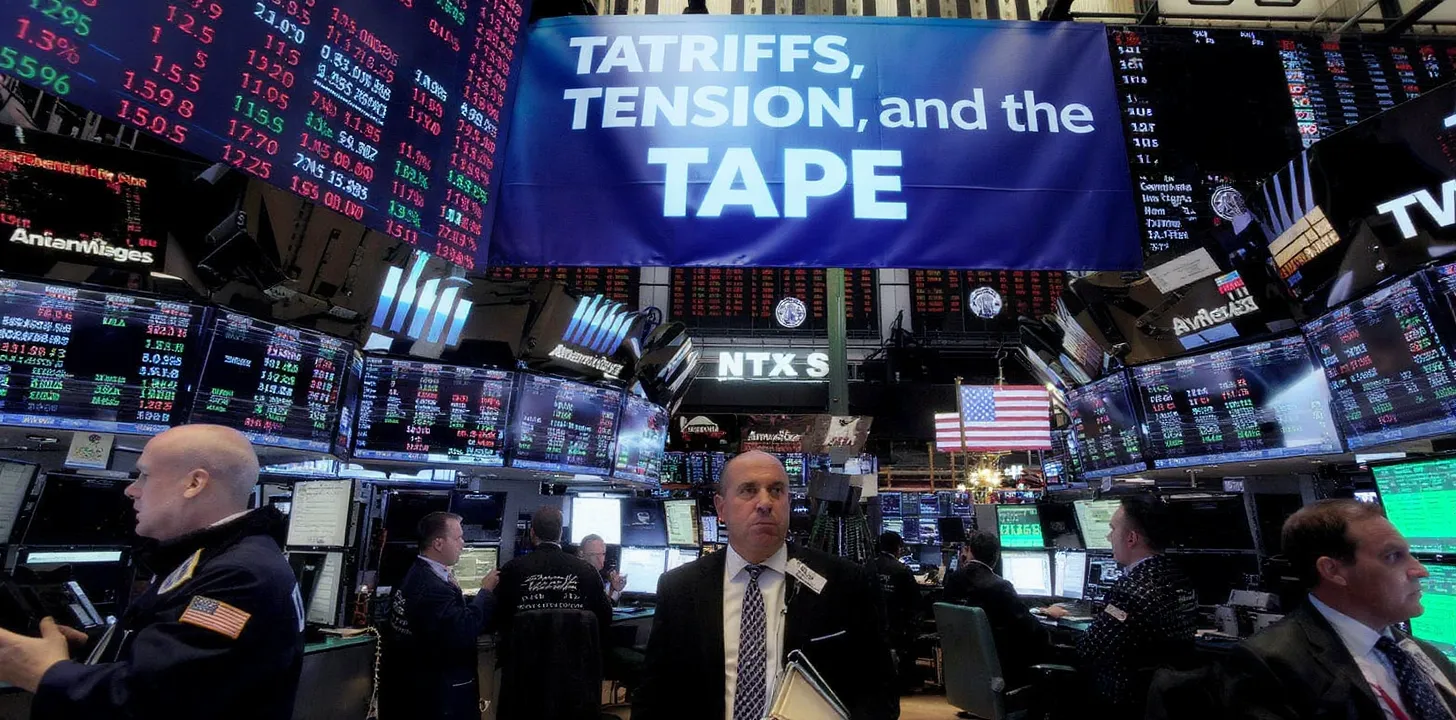Week Ahead: Central-Bank Crosswinds, Retail Reality-Check, and Trump’s Tariff Deadline Test
Week Ahead: Central-Bank Crosswinds, Retail Reality-Check, and Trump’s Tariff Deadline Test
Macro Map: Why This Week Matters
Traders open the book on the second full trading week of July staring at a dense macro calendar and a fresh dose of geopolitical risk. Europe kicks things off with May retail-sales data that could validate—or undermine—the region’s fledgling consumption rebound. Mid-week, the Federal Reserve’s June-meeting minutes arrive just hours before President Donald Trump’s self-imposed July 9 tariff deadline, while antipodean investors brace for back-to-back policy calls from the Reserve Bank of Australia (RBA) and Reserve Bank of New Zealand (RBNZ). Topping it off, OPEC+ has already surprised by accelerating output hikes, and the BRICS summit could produce fresh headlines on de-dollarisation.
Eurozone Spotlight: Retail Sales and Sentix
Monday’s Euro-area retail-sales print offers the first hard gauge of household demand since May’s inflation dip to 1.9 %. Consensus looks for a meagre 0.1 % MoM and 2.3 % YoY, but traders care less about the headline and more about the dispersion across durable goods: a beat driven by fuel and groceries would be shrugged off, while a broad-based surge could revive talk that the ECB is not finished tightening. The same session also brings the Sentix investor-confidence survey—already near two-year lows—which will act as a sentiment litmus test.
Australia: RBA Likely to “Cut and Hold”
The consensus among 37 economists is that Governor Michele Bullock’s board will deliver a 25-bp trim to 3.60 % on Tuesday, its third reduction of 2025. Markets have migrated from pricing three cuts this year to five amid collapsing building approvals and sub-trend GDP. Forward guidance will be the real driver: if the statement hints at another move in August, AUD/USD—already sagging near 0.65—could break April’s 0.6340 floor.
New Zealand: RBNZ Seen Standing Pat—but Watching October
Unlike its neighbour, the RBNZ is expected to leave the cash rate at 3.25 % on Wednesday. A Reuters poll published last week shows economists pencilling in one final 25-bp cut during Q3 as inflation inches toward target. Any surprise dovish tweak—such as signalling a Q2 move instead—would ignite NZD crosses, especially against a data-light CAD. Conversely, an on-hold stance with hawkish language could see NZD/USD retest 0.60.
FOMC Minutes: Parsing the Powell Subtext
Wednesday evening’s release of minutes from the June 17-18 meeting will be mined for clues on three fronts: how worried the Committee is about tariff-fuelled inflation, where it sees neutral policy after the September meeting, and whether labour-market “resilience” masks accumulating slack. In June the Fed left rates steady at 4.25 %–4.50 % and reaffirmed just two cuts for 2025 despite hotter CPI projections. Futures price a 60 % chance of the first trim in September; language that stresses “data dependency” but downplays inflation risks would tilt that probability higher and pressure the dollar.
Tariff Countdown: July 9 “Negotiation or Notification”
Treasury Secretary Scott Bessent says the White House still wants a flurry of “narrow” trade pacts before Wednesday’s deadline; failure would see the reciprocal tariff rate jump to 10 % for roughly 100 nations, with the EU staring at the prospect of 50 % levies in August. Headlines have kept the DXY index pinned near multi-year lows as investors gauge whether last-minute deals can avert a stagflationary shock. Expect whipsaw price action in EUR/USD and USD/JPY whenever press leaks hit the tape.
United Kingdom: Growth Pulse on Friday
Sterling traders get their big reveal on July 11, when the May GDP estimate drops alongside industrial production and trade data. The prior release showed a 0.3 % monthly contraction; analysts this time pencil in a mild positive. Anything north of 0.2 % could embolden Bank of England hawks arguing for a slower easing cycle, especially if the bi-annual Financial-Stability Report on Wednesday flags a still-resilient credit channel. Conversely, a fresh miss paired with a wider goods-trade gap (consensus: –£23 bn) would revive rate-cut chatter and undercut GBP/USD.
Oil, Commodities, and the BRICS Wildcard
OPEC+ stunned markets on Saturday by approving an additional 548 k bpd for August. Brent’s immediate slide below $68 signals scepticism that increased supply will offset recession-threat demand erosion. Yet any Gulf flashpoint could unwind that move in minutes. Meanwhile, the BRICS gathering in Cape Town could float new proposals for a gold-backed settlement unit—noise rather than signal for now but a headline risk for bullion bugs.
Cross-Asset Sentiment
Asian equities slipped at Monday’s open as traders digested tariff confusion and softer oil. The dollar index remains in a descending-channel, but IMM data show speculative shorts edging toward extremes—fertile ground for a short-squeeze should the FOMC minutes lean hawkish. U.S. two-year yields sit at 4.33 %, a whisker below June’s peak; look for a break above 4.40 % if headline risk turns pro-dollar.
Risk Radar
Upside Oil Shock if supply hike is overshadowed by Strait-of-Hormuz jitters.
Tariff Surprise—either a Grand Bargain that rallies risk or a breakdown that slams EMFX.
FOMC Hawk-Missile—minutes reveal unified pushback against early cuts, reviving “U.S. exceptionalism”.
Data Duds—soft Euro retail or UK GDP force ECB/BoE to reopen easing debate sooner.
Bottom Line
A lighter U.S. data docket belies the stakes: Fed minutes, tariff brinkmanship, and central-bank pivots in Australia and New Zealand could redraw interest-rate differentials in a flash. Layer euro-zone consumption numbers and UK output on top, and volatility looks under-priced. Stay nimble: liquidity tends to evaporate into mid-July as northern-hemisphere holidays kick in, exactly when this week’s event cluster could deliver its loudest shocks.



